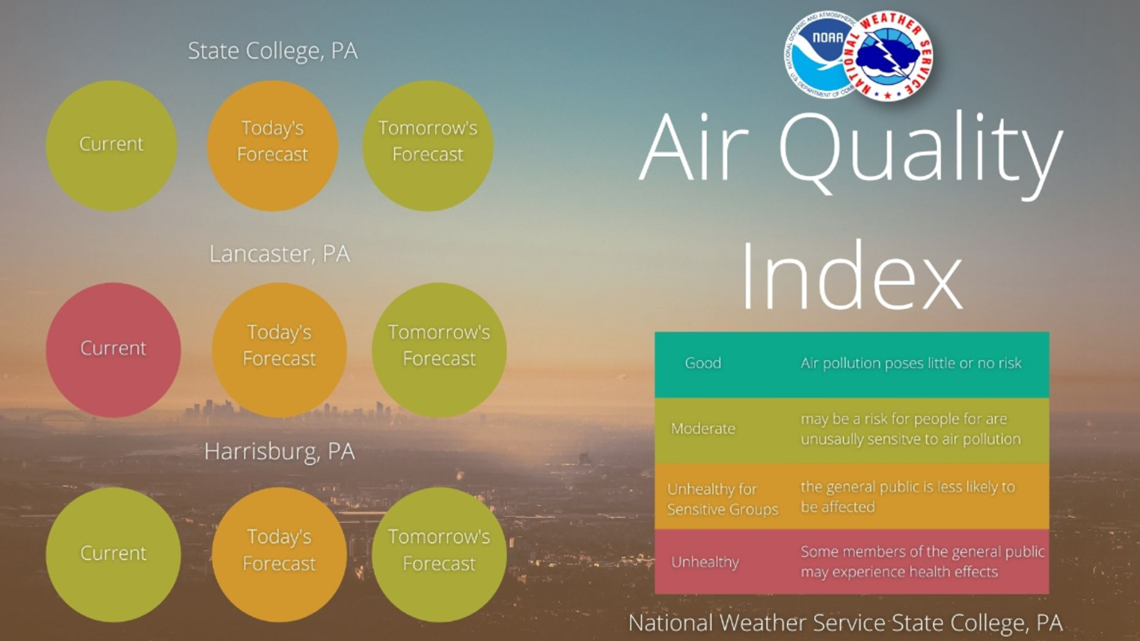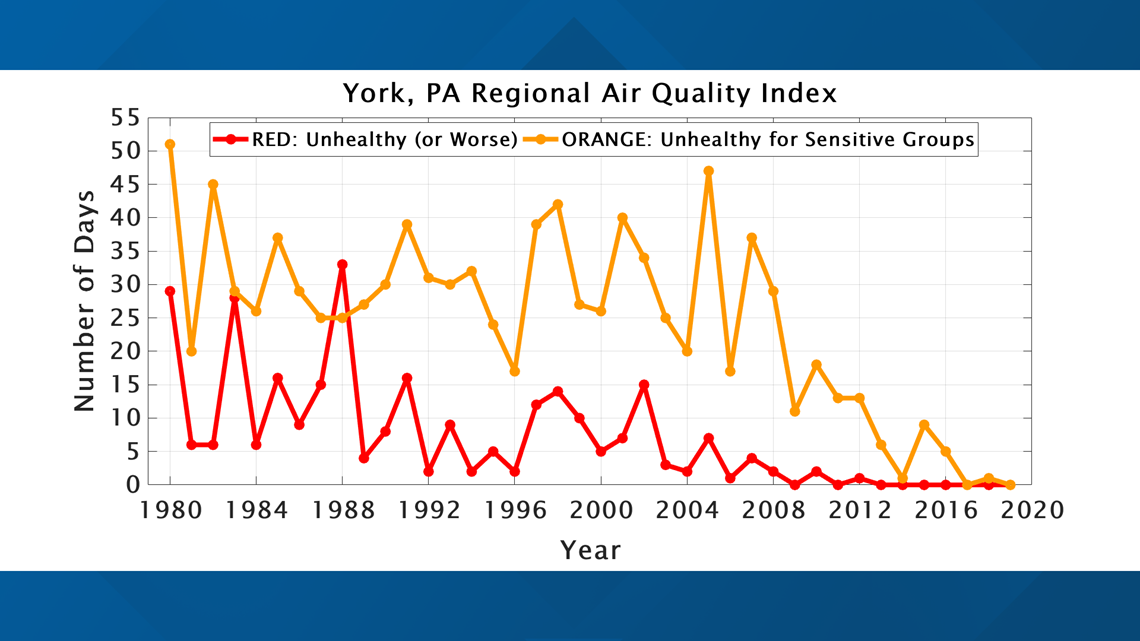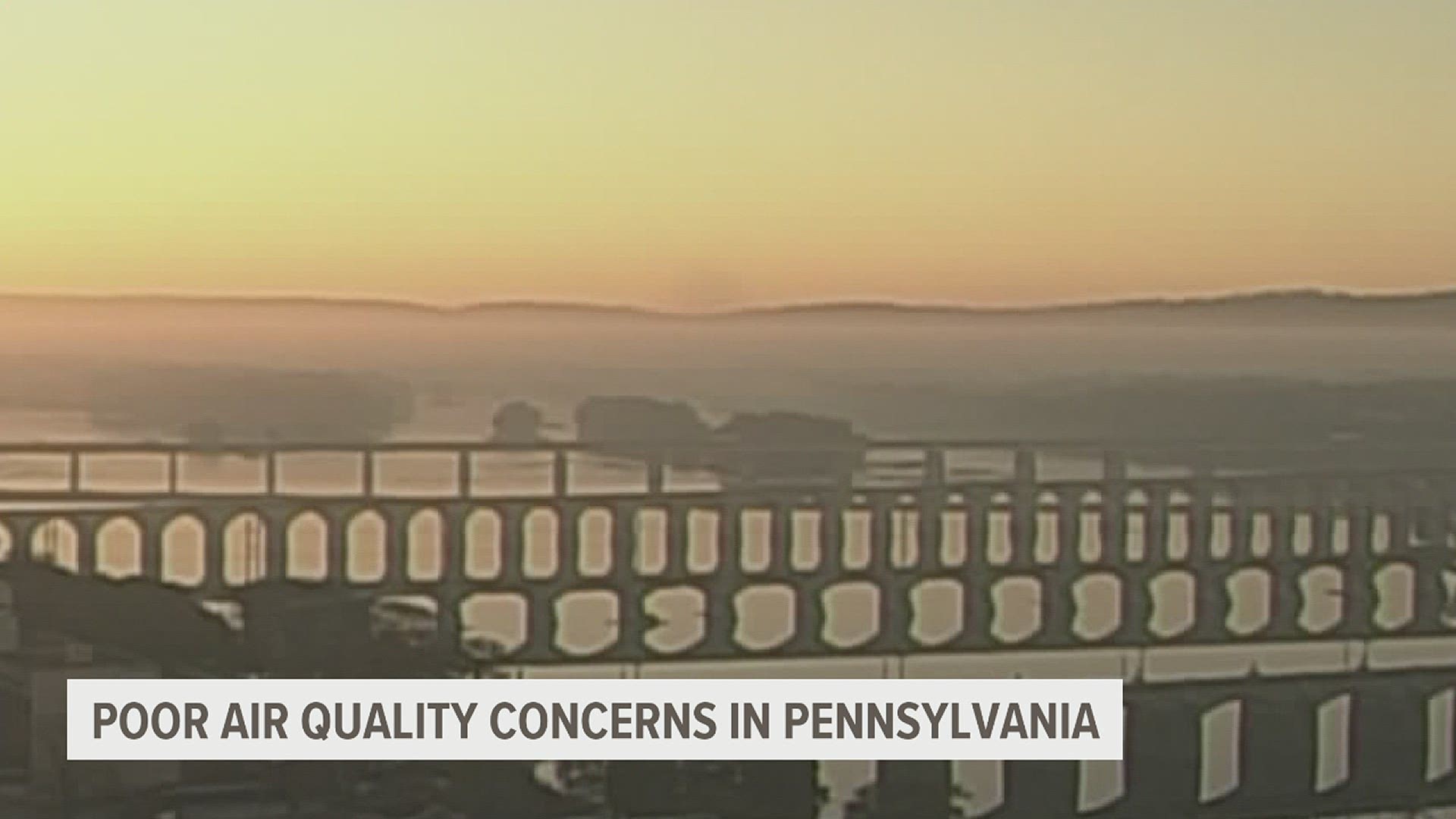LANCASTER, Pa. — People who have recently recovered from COVID-19, whose lungs are not yet back to 100%, need to be particularly concerned with the weather we’ve had lately.
Dr. Ryan Stauffer, a Research Scientist with NASA explains, “Three times that we’ve seen a code red pollution day in Lancaster in the past decade, and Sunday was one of them.”
The recent bright sunshine and warm temperatures made for some great weather in November, but this weather pattern was exceptional for other reasons.


Dr. Stauffer says, “High pressure dominated, skies were clear. In the morning, that layer where you can mix pollutants into was very shallow, so the pollution was very concentrated.”
Despite seeing a code red alert day for only the third time in the last decade, the recent trends are hopeful.
“Pollution trends for all pollutants whether its particles or ozone over the past couple of decades are way down. The trend continues to have fewer and fewer days where we’re seeing these code orange or worse air quality days for all pollutants," Dr. Stauffer explains.


When a code orange air quality alert is issued, the air quality is considered unhealthy for sensitive groups of people like those with asthma and COPD, older adults, and anybody with a respiratory or heart condition.
Once a code red air quality alert is issued, this particulate matter can cause those without pre-existing conditions to start to experience breathing issues.
Dr. Stauffer says, “These particles are so small that they get deep into your lungs and they can immediately cause respiratory and breathing issues, but on the longer term, they’re actually small enough to enter your bloodstream where they can cause heart conditions and cause heart attacks.”
After a serious case of COVID-19, a patient’s lungs can recover, but it takes some time.
This loops these survivors – whose lung function is not yet back to 100% - into the high-risk group when we get these alerts on days with poor air quality.
Dr. Stauffer says, “We know that if you have reduced lung function that you’re disproportionately affected by air quality issues such as particulate matter. I would then consider them to have a pre-existing condition as we talked about with asthma or COPD for example.”
Next time you see an air quality alert issued, for a code orange or especially a code red day, it means that older folks should stay inside as well as anyone with asthma, COPD, and even COVID-19 survivors whose lungs are still recovering.

